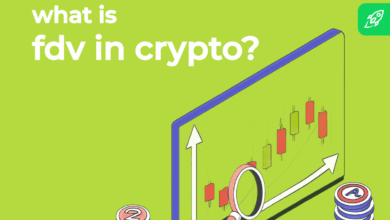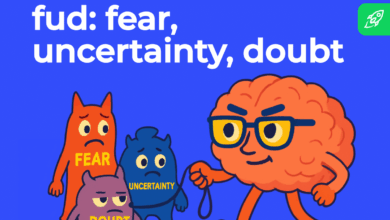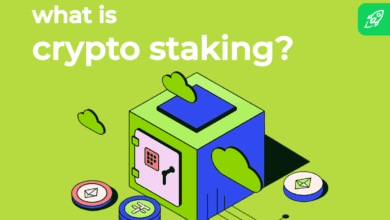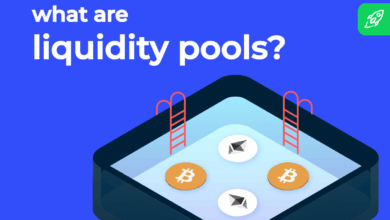What is Play to Earn? P2E blockchain games that let users earn money

More than a third of the world’s population plays video games, with Statista estimating that the video game industry will be worth over $220 billion in 2023.
The thriving industry has been bullish for over a decade, with plenty of new areas experiencing new spurts of growth, including games based on blockchain technology.
Blockchain-based games or crypto games was already a familiar concept at least since 2016. But it wasn’t until 2021 that blockchain gaming gained momentum with so-called Play to Earn (sometimes abbreviated as P2E) games introducing online video games that used non-fungible tokens (NFTs) and cryptocurrency.
Together with a model that used player-owned economies with in-game assets represented by NFTs and tokens, gamers are rewarded for their interactions with digital money or collectibles that they could later sell for profits.
This never-before-seen model turned the world of gaming on its head.
One problem with the popular massive multiplayer online role-playing games (MMORPGs as they are known) that currently dominate the industry is that they commanded a huge unsanctioned trades market for the items they earn in game.
While many MMORPGs often had an in-game economy where players traded goods for real currency, players communicated outside the games for to make peer to peer deals, facilitating trades and deals that would normally require the game developer’s approval.
This results in punishments and sanctions on a lot of gamers who, nevertheless, still fuel the demand for underground trades.
With blockchain-based games, developers opt for the peer-to-peer market. They may host marketplaces but also encourage players to trade on external marketplaces. Here, the blockchain is the enabler. It stores the items, and it also facilitates the trades, just as you would send and receive any other token or cryptocurrency.
Essentially, there would no longer be underground markets in play-to-earn games and P2E gamers were formally connected to a real-world economy.
While gamer ownership and an interface with real-world economy were the breakthrough principles, the real success of play-to-earn games is simply this: get someone to play a game, and they get money.
At its most basic form, a play-to-earn game is simply an online game using some form of blockchain technology that allows its players to earn for their playing time. Players are usually rewarded with real cryptocurrency of value, or other tokens that can be exchanged or sold for real money.
Thus, it’s hardly uncommon to find that the majority of users in a play to earn game aren’t normally gamers in the first place, but crypto investors and speculators who are there purely for the interest in earning.
Play-to-Earn has become a main component of many virtual worlds online – and are at least an aspect of most metaverses built on blockchain. As such, almost any kind of crypto metaverse online has its own form of cryptocurrency and various modes of games that essentially remunerate users for their time and effort spent on the platform.
In fact, since 2021, the majority of decentralised applications or Dapps that have seen the most activity (in terms of transactions on the blockchain) are in the play-to-earn category. The crypto bull market of that period was marked by a huge influx of users playing games to try and earn real money, either by directly generating more crypto with gameplay, or by creating game NFTs of particular rarity that can be sold for profits on digital marketplaces.
In this way, play-to-earn games opened a new type of gaming ecosystem where users had built-in ownership of the game currency and items. Blockchain networks not only hosted the game, but built a direct connection to a larger, interspersed digital economy that reflected real-world value.
Because these P2E games are actually crypto-enabled games, to start playing them, you would need a Web3 wallet. This often works as a login mechanism instead of typical username and password accounts, although many games do allow a form of both types of login.
The reason for a Web3 wallet is simply to keep track of player interactions – with most actions recorded as crypto transactions on the blockchain. Most of this happens behind the scenes, so as a game, they don’t look or feel different from conventional video games.
The major difference with P2E video games when compared to regular digital games is that they are much simpler on the surface. While a major video game title might spend a lot of effort on plot and storyline, P2E games tend to be shallower in these areas.
Generally, there is the briefest of storylines and plots accompanying P2E titles, and players should expect to be able to dive right into the game after playing a tutorial.
When titles do become popular, game developers then spend time to retroactively build a universe (or metaverse) around the gameplay.
Since the whole point of P2E games is to encourage players to spend more time in the hopes of earning more money, they also tend to feature simple and repetitive tasks. Monsters do become tougher and missions become more difficult but the solution is usually to invest more time. In other words, P2E gamers should get used to “grinding” or playing more and more hours to overcome increasingly difficult obstacles.
One of the drawbacks of this is a phenomenon common to traditional games that also feature repetitive level-up sessions – where players use automated scripts or bots to play the game endlessly. So instead of meeting other players as the games are designed to be, you may very well end up meeting lots of players using automated scripts. These are usually referred to as “bots”.
Unlike traditional video games that command such popular followings that they’ve become profitable franchises, all P2E games at the moment are multiplayer. While some titles are working towards longer plot- and mission-based storyline games, even these will feature multiplayer aspects, with a heavy focus on on player vs player (PvP) modes.
In fact, most P2E games will invest heavily into PvP features, to encourage players to outdo each other by collecting more powerful items and equipment or by creating rarer characters with unique traits to gain the advantage over their fellow gamers.
P2E games require many gamers to be successful. After all, if there is no one to beat, then what’s the point of playing? And if there are no players, then there is no demand for the in-game currencies, tokens, items or characters. What’s there to earn if no one is willing to pay the profitable price?
As such, many P2E communities gather online – usually in crypto-friendly platforms like Discord, Telegram, and Twitter. In fact, it is not uncommon for crypto communities to be found in P2E communities – the speculative interest in P2E earnings being a major driver.
Just as with regular gaming, there are also plenty of P2E guilds set up precisely to try and gather communities of gamers together to earn collectively. You can loan powerful items to get a kickstart to your campaign, rent out your own items for money, even join competitions with fellow powerful players to win contests.
One of the main complaints for many new users when it comes to play-to-earn games is that many of them have a high cost of entry.
This is because to even play them, users need to purchase NFTs as starting characters, usually because these characters are needed to either fight or breed new characters in the game.
For popular games, NFT starter packs can be quite expensive, with some titles like Axie Infinity costing a minimum of $300 at some point during peak crypto prices.
This led to play-to-earn gaming titles being labeled by some as “pay to play”.
As you can see, the potential to earn real money from a casual activity like gaming makes P2E a highly attractive prospect. However, all of these P2E game characteristics have led to many in the gaming community to draw unsavoury comparisons with mobile gaming (games that are made only for mobile phones).
- there are weak in original gameplay and plot,
- they require a lot of time investment to complete mindless tasks countless times,
- they are focused on multiplayer aspects with little attention to single-player experiences
- They contain a lot of social elements
- They favour players who are willing to pay
Another thing about P2E games is that they must interact with their blockchains, so you must always be connected to the internet for the game to work.
Right, now let’s get back to the “earn” aspect of play to earn or P2E.
Play to earn games aren’t a complex concept but the earning aspect may not be immediately apparent.
Because all of the gameplay is centred around making money, the point in many of these games is for the player to get their hands on potentially rare (and, therefore, valuable) in game assets. These assets can range from skins (think of them as special costumes for your game character or avatar), cards (that denote special traits or statistics that make your character stronger or more powerful) or even specific types of points or game currency.
What’s important to note is that these games only churn out these rewards in relatively tiny amounts for their participation in all manners of tasks. The idea is to repeat the tasks many times to get a significant amount.
Each asset is usually generated randomly by some kind of player interaction. For example:
- You can win points by defeating game monsters or other players. The more you win, the more points you have. These points can be used to buy better equipment or exchanged for cryptocurrency.
- You can “breed” new characters from existing ones, attempting to replicate rare traits in the offspring. You usually need more points or new characters to breed. The more often you breed, the likelier you are to create a rare character.
- You can buy virtual land that either generates points passively or is desirable itself in location in the virtual world. You earn when you flip the virtual land, or rent it out. This is the concept in many early blockchain-based games that bill themselves as metaverse games.
The earning parts come in at various points throughout the game. Most tasks can be done all the time, but there are typically special time-limited events or contests that allow players to earn boosted rewards for a specific period of time.
Some methods are more direct, such as exchanging earned points for cryptocurrency. Other players focus on creating or collecting in-game items (which are generated as NFTs) and then selling them on third-party marketplaces for actual crypto. An NFT marketplace can exist within the game itself or externally, such as on OpenSea. Here, you’ll find people listing better equipment, unique skins, and rare characters, in the hope that other gamers will buy them (since buying is a quicker way than investing time to create these random items).
While it’s not really important for the player to know, it might be helpful to understand the two different approaches from the perspective of play-to-earn game developers.
The first approach is for developers to create the game’s own native cryptocurrency or token.This then needs a blockchain project developers, making their own design, and creating their own smart contracts. They would also need to create trading markets for these tokens – typically on decentralised exchanges
In this way, the game’s players earn a unique cryptocurrency that acts just like any kind of in-game money, with the exception that they can actually be traded outside on exchanges and, therefore, have real-world value.
One of the first play-to-earn games to gain prominence is Axie Infinity, which uses this approach to create not one, but two native cryptocurrencies: Smooth Love Potion tokens (SLP) and Axie Infinity Shards (AXS). Both these tokens exist on the Ethereum blockchain.
One advantage of native cryptocurrencies lie in recognisability – anyone would know SLP and AXS come from the game Axie Infinity. On the other hand, because these are essentially alternative cryptocurrencies, with no other intrinsic value other than their in-game utility, their value, reflected in price, relies heavily on how much demand there is for the game itself.
As with many games, including Axie Infinity, once gamer activity or user counts start falling on the game, price tends to drop drastically. Price crashes then cause further gamers to leave the platform, as profitability falls, leading to a vicious cycle.
The second and less popular approach is simply for the game developer to adopt an existing cryptocurrency. This means choosing to reward their players with recognised crypto such as Bitcoin and Ethereum.
The obvious benefit of choosing this approach is that the game doesn’t have to spend any effort on marketing their own crypto, or creating blockchain projects around them, or creating and maintaining trading markets for them.
For those familiar with crypto already and already holding in these established cryptocurrencies, the fact that they can earn these crypto directly instead of needing to trade native tokens in the open market can also be plus points.
In the early days of blockchain gaming, this was the typical earning route for many blockchain projects. CryptoPunks and CryptoKitties, while themselves emerging long before the term play-to-earn was coined, were among the first to use NFT collectibles in blockchain games. Both chose to use Ethereum as their currency of exchange (though, formally, they only sold NFTs).
As mentioned previously, the very first step is to get a crypto wallet that’s able to connect you to a blockchain game.
Learn Crypto Academy quests are the perfect place to start learning how to do this – complete the first quest and you’ll have a Web3 wallet that’ll let you play a blockchain-based game to earn rewards.
However, be aware that there is no quick route to riches from playing games. While this article discusses how these games work, there is much to be said about their true earning potential.
Essentially, earning from these games may be straightforward, but profitability is not guaranteed, particularly as you’ve to invest a considerable amount of time and effort into games that may lack the enjoyability and quality of conventional gaming.





